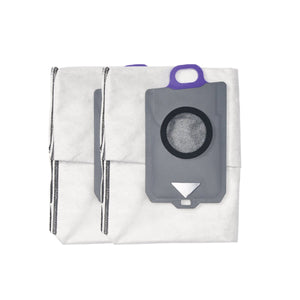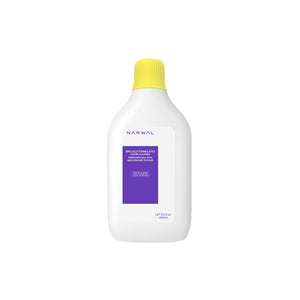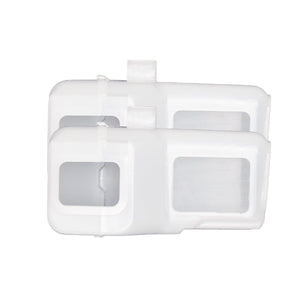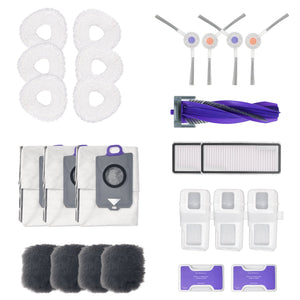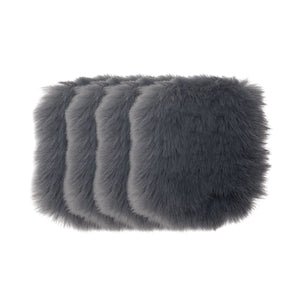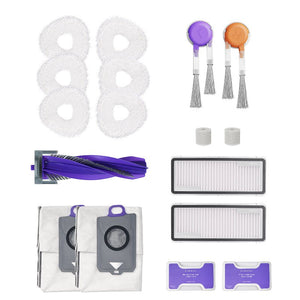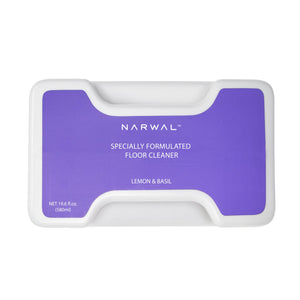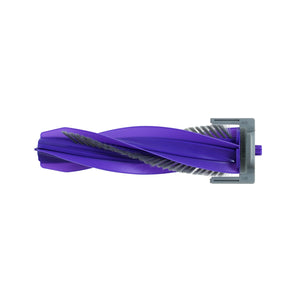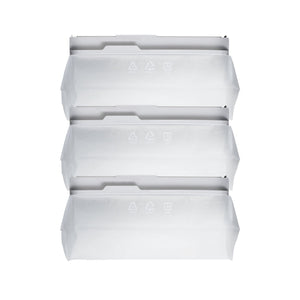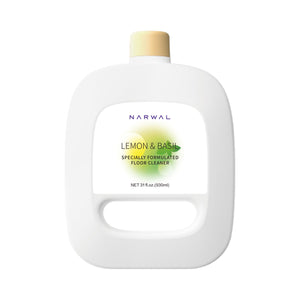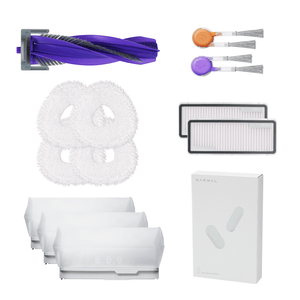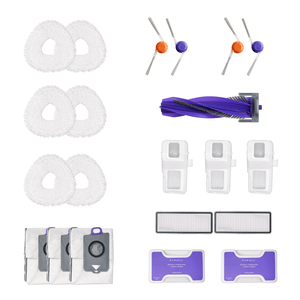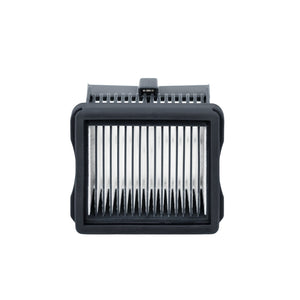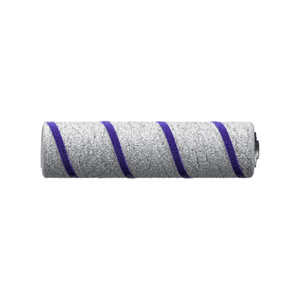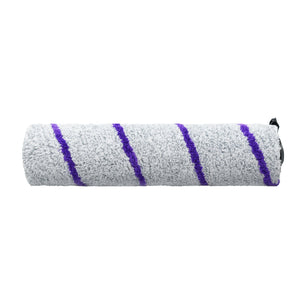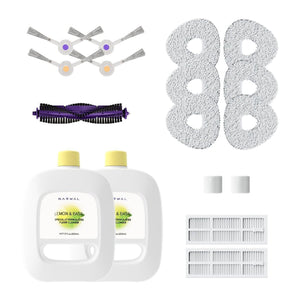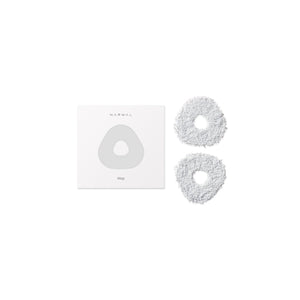Got an old vacuum cleaner you don’t know what to do with? You're not alone. With the rise of smart home devices, including robot vacuums, the need for responsible disposal is growing. In fact, the global e-waste generation is expected to reach 74 million metric tons by 2030. Disposing of electronics improperly can release harmful chemicals into the environment. This guide will help you recycle or dispose of your old vacuum cleaner in a way that protects both the planet and human health.
Can a Vacuum Cleaner Be Recycled?
Yes, a vacuum cleaner can be recycled, but it depends on the materials it contains.
Most vacuum cleaners contain various recyclable components, including metal parts, plastic housings, and electronic elements. Recycling centers commonly accept the motor, cord, and metal parts. Even parts like the copper in the cord or internal metal components can be valuable for scrap yards.
However, not all parts are easily recyclable. Some bags and filters may need to be discarded as general waste because they aren’t accepted by most recycling programs.
Why Proper Disposal of Robot Vacuums Matters for the Environment
A well-maintained robot vacuum can last 4-6 years, but when it reaches the end of its lifespan, proper disposal is crucial. Robot vacuums contain electronic components like circuit boards and wiring, which can be hazardous if not disposed of correctly. Discarding your old vacuum in a landfill or through open burning can release harmful chemicals into the environment. According to the World Health Organization, open burning can emit up to 1,000 toxic substances, negatively impacting air quality and human health.
Additionally, disposing of lithium-ion batteries in landfills is discouraged. These batteries can explode or leak harmful chemicals if not handled properly. Robot vacuum cleaners and their accessories contain valuable yet hazardous materials such as rare metals, heavy metals in sensors, and non-biodegradable plastics. These materials must be recycled using environmentally safe methods to prevent pollution.
That's why it’s essential to take your old robot vacuum to a certified e-waste recycling center. Ensure the batteries are sent to a specialized facility that focuses on their safe recycling. This responsible disposal protects the environment and helps recycle valuable materials like metals, plastics, and batteries, ultimately reducing the environmental footprint of electronic waste.
How to Dispose of an Old Vacuum Cleaner?
When it's time to part ways with your old vacuum cleaner, you have several options for responsible disposal or recycling. From local recycling centers to trade-in programs, there are many ways to ensure your vacuum is handled properly. Here's a quick guide to the best disposal methods.
Local Recycling Centers
Many local recycling facilities accept small appliances, including vacuum cleaners. Check with your nearest recycling center to confirm they handle vacuums and their specific requirements. Some centers accept components like metal and plastic, but you may need to remove non-recyclable parts such as bags and filters before dropping off your vacuum.
Retailer Take-Back Programs
Many retailers, including Best Buy and Home Depot, offer take-back programs for old appliances like vacuum cleaners. These programs ensure proper disposal by breaking down the appliance into recyclable parts. Some retailers might even discount a new product when you recycle an old one.
E-Waste Recycling Facilities
Specialized e-waste recycling centers focus on processing electronic devices. They have the equipment to properly disassemble and recycle components like motors and electronics from your vacuum cleaner. Websites like Earth911 or e-Stewards can help you locate certified e-waste recycling facilities in your area.
Donation Centers
If your vacuum cleaner still works, consider donating it. Charities like Goodwill or Habitat for Humanity may accept gently used vacuum cleaners. Ensure the appliance is in good condition and check the organization’s guidelines before dropping it off.
Municipal Curbside Pickups
Some cities offer curbside pickup programs for bulky items and e-waste. These services allow you to recycle an old vacuum cleaner by scheduling a pickup or placing it out on designated collection days.
Explore Resale and Trade-In Options for Your Old Vacuum Cleaner
Looking to part with your old, well-maintained self-cleaning vacuum? Consider reselling your old vacuum cleaner online to give it a second life and potentially make some extra cash. Many platforms allow you to list used vacuum cleaners, including robot vacuums, making it easy to reach potential buyers. If you're upgrading to a newer model, check for vacuum cleaner trade-in programs that offer a discount on new vacuums when you exchange your old one. Not only does this help you save money, but it also ensures your old vacuum is responsibly reused rather than ending up as waste.
Why Should I Recycle a Vacuum Cleaner?
Proper disposal of your old vacuum cleaner is not only important for your home but also for the environment. Recycling your vacuum cleaner can bring numerous benefits, from reducing harmful waste to supporting a sustainable economy. Let’s take a closer look at why recycling is crucial.

Minimize E-Waste
Vacuum cleaners are considered electronic waste (e-waste), which is one of the fastest-growing categories of waste worldwide. Recycling helps reduce the amount of e-waste, which often contains toxic materials that can leak into soil and water, harming ecosystems.
Reduce Environmental Impact
Vacuum cleaners are made of plastic, metal, and electronics, which, if left in landfills, can contribute to pollution and soil contamination. With over 50 million metric tons of e-waste generated annually, recycling vacuum cleaners is crucial. By reusing valuable parts and reducing waste, vacuum cleaner recycling helps conserve resources and lower the environmental impact of vacuum cleaners. Proper disposal also prevents harmful chemicals from leaching into the environment, supporting sustainable practices.
Support the Circular Economy
Recycling old vacuum cleaners supports a sustainable, circular economy. When recycled, its components are processed and reused in the production of new products. This achieves a more efficient use of resources and reduces waste.
Comply with Local Regulations
In some areas, throwing electronic appliances like vacuum cleaners in regular garbage is illegal. For instance, the WEEE Directive in the European Union requires proper recycling of e-waste, and many U.S. states have laws mandating e-waste recycling. Recycling vacuum cleaners ensures compliance with local disposal laws and prevents fines, promoting sustainable waste practices.
Common Types of Vacuum Cleaners and Their Recyclability
Different types of vacuum cleaners are made with varying materials, and knowing how to dispose of them properly can make a significant impact on reducing e-waste. Here’s a breakdown of some common types and their recyclability.
Upright Vacuum Cleaners
Upright vacuums typically consist of a rigid plastic body, a motor, and metal parts. The metal and motor components are generally recyclable, but the rigid plastics might be harder to recycle depending on your local facility. However, many recycling centers do accept parts of upright vacuums, especially metal components.
Canister Vacuum Cleaners
Canister vacuums have separate components for the motor and the hose, making them slightly different from uprights. The canister is often made of a mix of plastic and metal. These components can be recycled if separated properly. The hose and attachments, which are usually flexible plastics, may not always be accepted for recycling.
Handheld Vacuum Cleaners
These small, portable vacuum cleaners are often made mostly of plastic with some electronic parts. The electronic components, such as motors and batteries (if cordless), are recyclable at e-waste centers. The plastic parts, however, may be more difficult to recycle unless your local facility accepts rigid plastics.
Robotic Vacuum Cleaners
Robotic vacuums contain a mix of electronic components, motors, and plastic. The battery and motor can be recycled at e-waste recycling centers, but the outer plastic casing might not be recyclable in all areas. It’s best to check with specialized recycling facilities for these advanced electronic devices.
Stick Vacuum Cleaners
Stick vacuums are lightweight and typically made with a combination of plastic and metal. Like handheld vacuums, the motor and metal parts are often recyclable, but the plastic parts might be harder to process unless they are made from recyclable plastic.
Recommended Replacement: Narwal Freo Z Ultra
If you’re looking to replace your old vacuum cleaner, consider the Narwal Freo Z Ultra, a cutting-edge robot vacuum and mop. This all-in-one device combines advanced cleaning features with smart technology, making it an ideal replacement for traditional vacuums.
[cta:narwal-freo-z-ultra-robot-vacuum-mop]
Powerful Suction
he Narwal Freo Z Ultra can offer 12000Pa suction power, ensuring deep cleaning, whether on carpets, tiles, or hardwood floors.
2-in-1 Vacuum and Mop
The Narwal Freo Z Ultra offers both vacuuming and mopping functions, allowing it to clean floors efficiently. It switches between these modes based on your preferences or the type of surface it’s cleaning.
Self-Cleaning
This model comes with a self-cleaning base that automatically washes and dries the mop, saving you from the hassle of manually cleaning the pads.
AI Smart Mapping
The robot uses AI-powered technology to map your home, ensuring thorough coverage and cleaning precision.
App-Controlled
You can control the device via the Narwal app, which allows you to schedule cleanings, adjust settings, and track the robot’s progress.
FAQs
How to Dispose of a Vacuum Cleaner Battery?
- Remove the Battery Safely
Ensure the vacuum cleaner is powered off and disconnected from any electrical source before removing the battery. This prevents any risk of shock or damage during the process.
- Recycle the Battery
Do not throw the battery in the trash, because it can leak harmful chemicals into the environment. Bring the battery to a designated e-waste or battery recycling center. Many retailers, like Best Buy, have battery recycling programs
Is it worth fixing an old vacuum?
Whether it’s worth fixing an old vacuum depends on its condition and the cost of repairs. If the vacuum only needs minor repairs, such as replacing small parts, it might be worth fixing.
In general, if the repair costs exceed half the price of a new vacuum, it’s usually better to replace it.
Are vacuum cleaners worth scrapping?
Yes, vacuum cleaners can be worth scrapping, especially if they contain valuable materials like metals, motors, and copper wiring.
Summary
Responsibly disposing of or recycling your old vacuum cleaner is an important step in reducing environmental impact and minimizing e-waste. Additionally, replacing your vacuum with modern, efficient options such as the Narwal Freo Z Ultra can further streamline your cleaning routine.



















